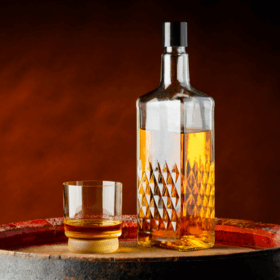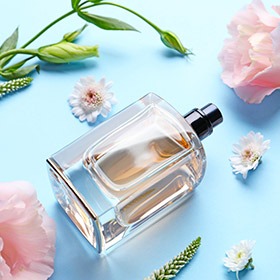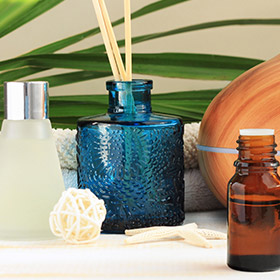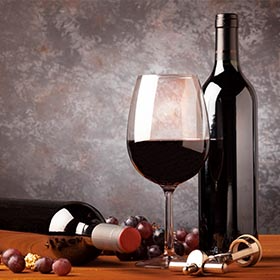In 2020, the United States beer industry alone shipped out 204.8 million 31 gallon barrels of beer, which translates to over 2.8 billion cases. That figure should paint a clear picture of how beer is consumed around the world and where the beer bottling industry stands.
The art of making beer has been around for ages, and as the years progress, it continues to expand and gain new forms as it integrates with technology along the way. But how good do you know your beer bottles as a consumer?
We are going to delve into a full beer bottle guide. We will look at how they are made, the types that exist, why they feature some specific colors and shapes, and how they are cleaned and recycled. If you are a beer drinker and have always been curious to know what goes into the making of the bottle that houses your favorite pint, then you are in the right place.
Whether you’re a brewery seeking standard beer bottle sizes for mass production or searching for unique beer containers like old green beer bottles for a craft beer line, understanding the different types of beer containers is essential. From glass bottles of beer to larger beer bottles, choosing the right packaging can make a significant impact on branding and product preservation.

The variety of beer containers available today allows breweries to select the best option for their products. Glass beer bottles, including old beer bottles and brown beer bottles, remain popular choices for their ability to preserve the beer’s flavor and quality. Beer bottles have evolved into more than just containers; they serve as essential tools for branding, preservation, and consumer experience. Whether it’s a glass beer bottle for premium lagers or an empty beer bottle reused for homebrewing, packaging plays a major role in shaping how consumers perceive the product. Today’s breweries must carefully evaluate whether to use traditional brown bottles, innovative blue bottled beer for unique branding, or clear glass bottled beer to showcase the color and clarity of their brew. Understanding the characteristics of these different bottle types is essential in making informed packaging decisions.
Types of Beer Bottles

Longneck Beer Bottles

Heritage Beer Bottles

Swing Top Bottles

These are beer bottles that come with a swing-top cap that can be opened by a simple twist, hence the name swing-top. The cap is usually made using zinc-plated steel wire constructed using polyethylene plastic stoppers and reinforced with food-safe rubber.
The swing top bottles are among the most stylish and ornate bottles you will ever come across, and they are known by different names in different places. Some of the biggest beer brands that use this type of beer bottle include Bormiolli Rocco from Italy and Grolsch Brewery, who are responsible for making these bottles more popular.
Specialty Beer Bottles

Steinie Beer Bottles

Belgian Beer Bottle

Screw Top Bottles



Why are Beer Bottles Brown?

If you are an ardent drinker of beer, you may have noticed that there are no clear beer bottles; they usually come in some form of color like amber or brown. The most common beer bottles are brown in color, and this is not an accident; there’s a good reason for making beer bottles in this fashion, and the reasons include the following.
● The brown color is ideal for blocking out the UV light rays which have an effect on the taste of the beer inside; when beer is exposed to direct sunlight, the properties of the elements that give it that unique tangy taste are affected, and this inturn destroys the taste and the smell of beer.
● This was a practice that was popularised in the prohibition era, where dealing with alcohol was illegal. To avoid detection, many brewers had to switch to dark-colored bottles, and this practice carried over into the modern era and became part of the beer bottle culture.
● It is easier to brand dark-colored bottles, and brown bottles provide the perfect background for any kind of branding to be added. Even simple engravings can be seen quickly, something that clear-colored bottles are unable to replicate.
At the moment, brown beer bottles are rapidly being replaced by amber, green bottles. There’s not much difference between the two as far as the functionalities are involved, but the amber, green beer bottles look way better and can accommodate all kinds of branding colors in a more refined way than brown ones. Some of the biggest beer brands in the world, like Heineken and Carlsberg, are best known for their iconic amber, green beer bottles.
Other colors that are also being used in the beer world include Flint, which is almost transparent to the point where you can see the color of the beer you are drinking. The beers used in these bottles have a high level of lucidity, and this means they don’t need to be protected from UV rays. Common beers that are packed in this manner include malts and flavored ciders.
Beyond brown color, breweries are increasingly experimenting with color and style to stand out in a competitive market. Blue bottled beer, for instance, has gained popularity in premium and craft segments because it creates a striking visual difference from common amber and brown tones. Glass bottled beer in unique shades helps brands distinguish themselves while still offering the durability and recyclability that glass is known for.
How to Clean Beer Bottles

If you are running a homebrew project, getting your hands on new beer bottles every time you want to make a new batch can cost a lot. However, there’s a way you can properly clean the bottles you have been using to bottle the beer in again. The following are the ways you can clean beer bottles properly.
● Soak the Bottles in Water Overnight: Take all your empty beer bottles and soak them overnight in a huge tank of water. Add a solution of OxiClean to the water and clever the whole tank up, and leave it to stay like that overnight. This should help with dissolving any residue beer that may have dried up inside the bottles.
● Clean and Remove the Labels: Most beer bottles come with labels made of paper that can be removed by yanking them off. But that can be hard where strong adhesives are used. The overnight soaking is designed to make this work easier. Slowly scrub the labels off until no scrap is left standing. You can use cleaning solutions for this, and you should ensure you are wearing a pair of gloves to stop your hands from drying out later on.
● Sanitize the Beer Bottles: The cleaning only takes care of visible dirt, but there are bacteria that may have made a home in the empty beer bottles that have to be cleared off completely to prevent any chance of beer positioning later on. You can either use the regular home dishwasher for a thorough sanitization, or you can buy specially made beer bottle no-rinse sanitizers at your local store. Make sure you follow the instructions to the latter.
● Allow them To Dry for 24hrs: Once you have sanitized the beer bottles and rinsed them well enough with clean water, it is time to allow them to dry. Place them upside down, with the mouth opening facing downwards. If you have a dish rack that’s big enough, that could work perfectly. Let the bottles rest for 24hrs to completely dry out. You are now ready to start packaging your homebrew beer.
Factors to Keep in Mind when Choosing Beer Bottles

Running your own home brewing project is an exciting thing to do that can occupy your time well. It can even make you good money if you play your cards right. However, you may do everything right only for everything to come undone by choosing the wrong bottle. The following are some of the factors you have to keep in mind when choosing a beer bottle for your own beer project.
● Capacity: You have to first figure out the capacity of your beer before choosing the bottle. The standard capacity of the average beer bottle is between 350ml – 500ml. Anything above that is overkill as the bottle will be too heavy for anyone to comfortably hold while drinking. Therefore, make the decision to either go for the 350ml or the 500ml before getting your beer bottles.
● Branding Needs: If you want to go all out with branding, then consider going for amber, green beer bottles; after all, they look way better and are more popular these days. Brown bottles can work too where branding is concerned, but they are only ideal if you are a traditional type of brewer looking to keep things the traditional way all through.
● Sealing Mechanism: This comes down to two things: convenience and style. For the most part, screw-top seals offer the easy convenience of sealing your beer as they are easy to make and are widely available. You can even have customized beer bottles to the exact design that you want. If style is what you are going for, then consider going for swing-top seals that are not only fun to open but have a rich history and legacy.
● Bottle Grip: You want a bottle that will fit the hand perfectly without the bottle slipping up and falling. This is the reason beer bottles are never made any bigger than 500ml in terms of capacity. Check that the bottle you go for can be comfortably held by one hand even when it is wet without sleeping through the hand.
● Reusability: A standard beer bottle can be reused about 16times before it is written off. This should be an important factor to consider since having to buy beer bottles every time you are brewing can be counterproductive to your business model. Get new bottles that you can use several times before you are required to get a new batch.
● Budget: You have to work within your budget when selecting a beer bottle. If you are doing this for fun, then you should consider going for used and unbranded empty bottles compared to having a bottle manufacturer designing and producing custom-made ones for you. This will cost you a lot more. Work within your budgetary limits.
Apart from recycling beer bottles, you could also use them as decorations. If you don’t have enough budget but want to create a special bar, try some used leather couch. You might be confused about how to repair leather couch. Don’t worry, trying some wonderful couch covers and decorating them with these empty beer bottles is a good way to create a special theme bar.


Conclusion
The world of beer bottles is wide, and it continues to expand every year; and for those looking to start their own beer brewery, there are many things to learn and understand before committing your money to the project. For breweries and beverage companies, sourcing the right empty beer bottle is just as important as brewing the beer itself. Glass bottled beer remains the industry standard because it protects flavor integrity, supports branding opportunities, and aligns with sustainability goals. As consumer demand for distinctive packaging grows, more businesses are turning to suppliers who can provide a wide range of beer bottle sizes, colors, and styles to meet both creative and functional needs. For more information on beer bottles and how they are manufactured, check out our website and have all your questions answered by our team of experts.




